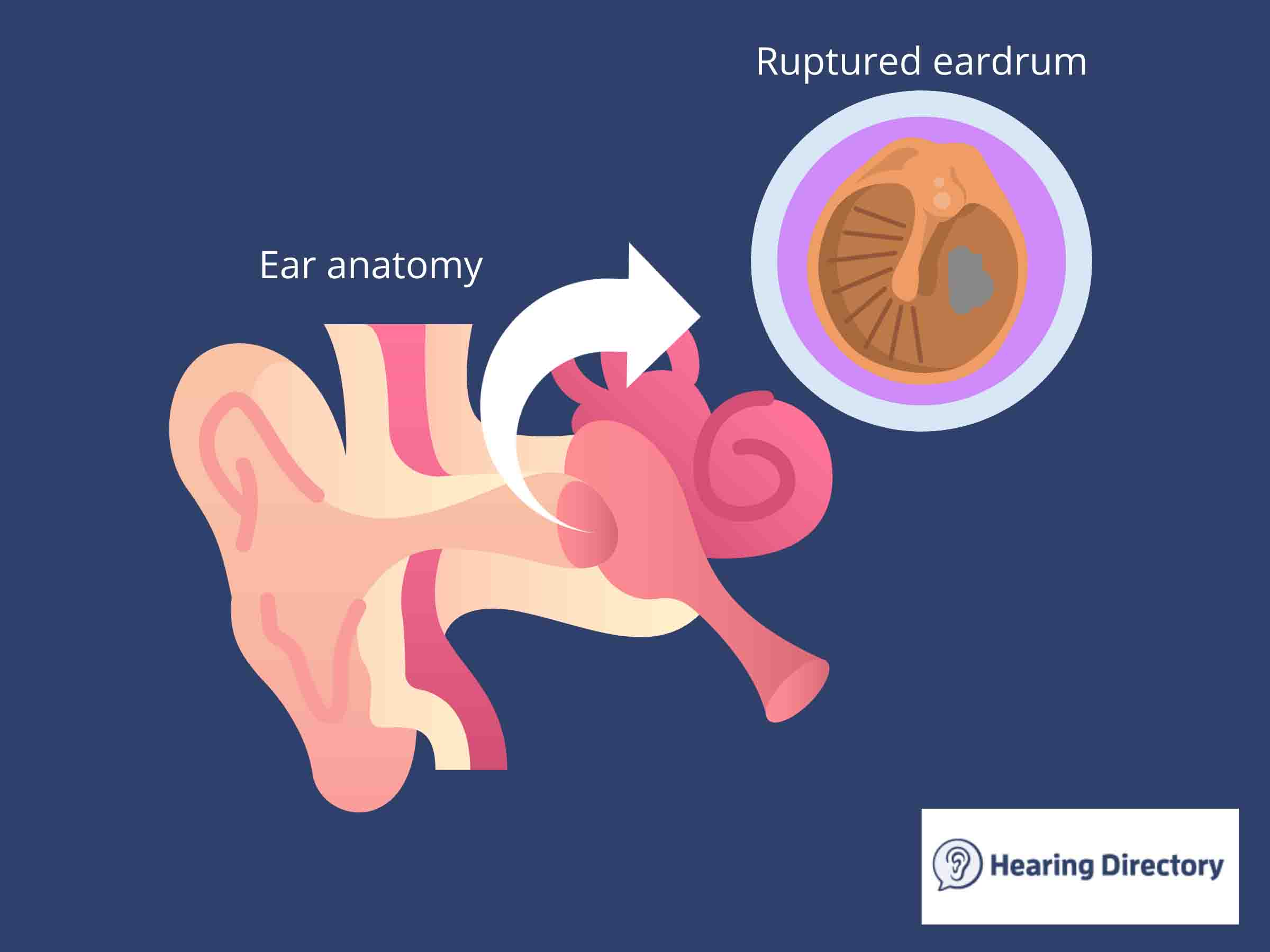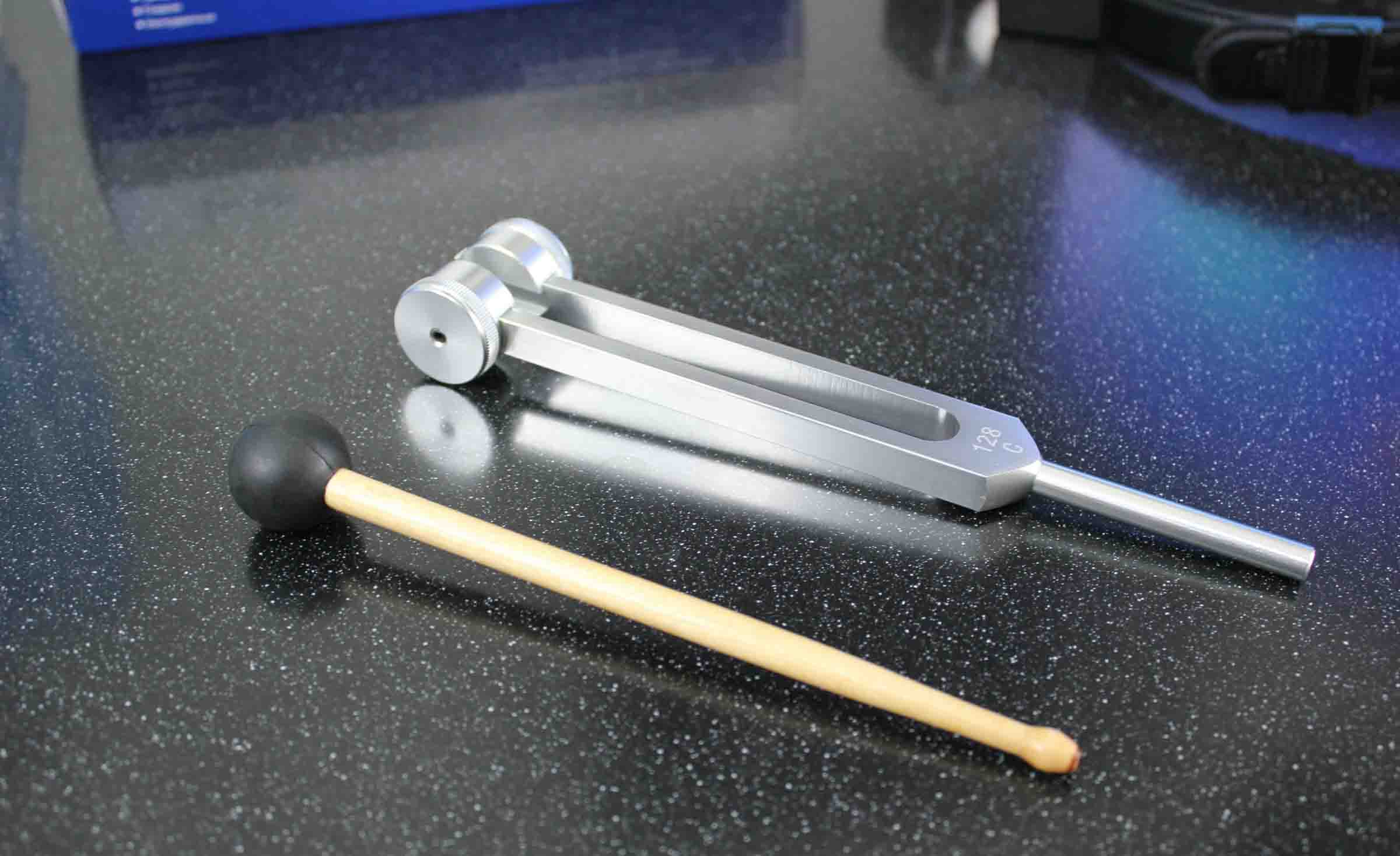|
www.HearingDirectory.ca |
Ruptured eardrums and hearing loss
By Shantelle Shakes, BA (Hons)., Hearing Health Information Coordinator, Hearing Directory Last updated on: July 25th, 2025 A ruptured eardrum is a tear or hole in the thin tissue that separates your ear canal from your middle ear. This condition can lead to temporary or permanent hearing loss. Key points:
A ruptured eardrum, also called a perforated eardrum or a tympanic membrane perforation, is a tear or hole in the thin tissue that separates your ear canal from your middle ear. Direct trauma to the eardrum is most commonly seen in children. 
that separates your ear canal from your middle ear. How can you pop your eardrum?Common causes of an eardrum rupture include
Inserting objects like cotton swabs into the ear can also cause damage. Eardrum rupture can also occur during ear irrigation or while removing a foreign object from the ear. What are the signs and symptoms of eardrum rupture?You may feel sudden and severe ear pain that goes away quickly. Other signs and symptoms include:
Hearing loss and and ruptured eardrumsAn eardrum rupture can lead to temporary or permanent hearing loss. The hearing loss is more severe if the tiny bones behind the eardrum are affected or the inner ear is injured. An eardrum rupture requires a
You will also have an early assessment of hearing loss using a tuning fork. An audiogram before and after eardrum rupture treatment can help determine the extent and nature of your hearing loss. It will also help avoid confusion between trauma-induced and treatment-induced hearing loss. Persistent hearing loss of 30 decibels or more, or lasting two months after the perforation has healed, may indicate injury to the tiny bones behind your eardrum. Treatment for this kind of hearing loss may include bone reconstruction or hearing aids. Can a punctured eardrum heal?
of hearing loss. In many cases, a punctured eardrum heals on its own within a few weeks. Eardrums ruptured due to penetrating or blunt injuries have a good chance of resolving on their own. Those from blast trauma or burns are less likely to heal on their own. A doctor may suggest
If your punctured eardrum does not heal in six months, surgery called tympanoplasty may be needed. How to cope with a ruptured eardrumIn addition to taking pain relievers,
Always see a healthcare provider if you have symptoms of a ruptured eardrum. Early care can prevent infection and protect your hearing. Sources: - Ghent University Hospital. Middle ear damages. - Nigerian Journal of Clinical Practice. Spontaneous healing of traumatic tympanic membrane perforations. - PubMed Central. Tympanoplasty Outcomes: A Review of 789 Cases. - Springer Nature Link. Tympanoplasty. Shantelle Shakes, BA (Hons)., Hearing Health Information Coordinator, Hearing Directory
You are reading about: Related topics
More information about hearing aids. Featured clinics near me
Schedule a hearing test with Healthy Hearing. Find a clinicThe Healthy Hearing Report |
|
www.HearingDirectory.ca |
Ruptured eardrums and hearing loss
By Shantelle Shakes, BA (Hons)., Hearing Health Information Coordinator, Hearing Directory Last updated on: July 25th, 2025 A ruptured eardrum is a tear or hole in the thin tissue that separates your ear canal from your middle ear. This condition can lead to temporary or permanent hearing loss. |
 Are you located in the United States?
Are you located in the United States?

 Shantelle Shakes is the hearing health information coordinator for Hearing Directory. She has over ten years of experience in the health industry, with nine of those years in hearing healthcare. After graduating from York University with an honours BA in professional writing, minor in creative writing, Shantelle began her marketing career with a major hearing healthcare provider. Through a variety of roles within that company, Shantelle gained a thorough understanding of hearing health and the client experience. She aims to use her knowledge of the industry as well as her communications background to help others understand their hearing and connect with the hearing care they need.
Shantelle Shakes is the hearing health information coordinator for Hearing Directory. She has over ten years of experience in the health industry, with nine of those years in hearing healthcare. After graduating from York University with an honours BA in professional writing, minor in creative writing, Shantelle began her marketing career with a major hearing healthcare provider. Through a variety of roles within that company, Shantelle gained a thorough understanding of hearing health and the client experience. She aims to use her knowledge of the industry as well as her communications background to help others understand their hearing and connect with the hearing care they need.